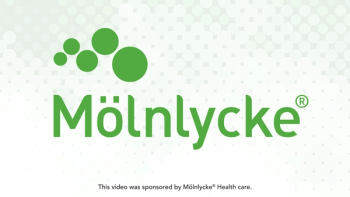
Understanding Dry Eye and Using Tyrvaya® (Varenicline Solution) Nasal Spray

Sponsored Content: Overview of dry eye disease pathophysiology and proper administration technique for the Tyrvaya nasal spray.
Indication
Tyrvaya® (varenicline solution) nasal spray is indicated for the treatment of the signs and symptoms of dry eye disease.
Important Safety Information
The most common adverse reaction reported is 82% of patients was sneezing. Events that were reported in 5-16% of patients were cough, throat irritation, and instillation-site (nose) irritation.
Pharmacist: This video contains important information you may want to discuss with patients when they come to pick up their prescription of Tyrvaya® (varenicline solution) nasal spray for the treatment of the signs and symptoms of dry eye disease at the pharmacy.
This video includes educational information about dry eye disease and instruction on the proper administration and storage of Tyrvaya®.
Dry eye disease is a chronic condition that impacts an estimated 16.4 million adults in the United States, and it is growing in prevalence.
Dry eye disease is a chronic, multifactorial disease of the ocular surface characterized by tear film instability and deficiency.
When tear film is healthy and stable, it nourishes, hydrates, and protects the ocular surface. When the tear film becomes unstable and deficient, it leads to dry eye disease.
There is no substitute for a patient’s own natural tear film.
While over-the-counter artificial tears provide temporary relief and may contain synthetic agents and preservatives, natural tear film is made up of a complex mix of more than 2000 different molecules.
Increased production of natural tear film can reduce the signs and symptoms of dry eye disease.
Tyrvaya® (varenicline solution) is the first and only nasal spray FDA-approved for the treatment of the signs and symptoms of dry eye disease.
Approval was based on the established efficacy and safety of Tyrvaya evaluated in the ONSET-1, ONSET-2, and MYSTIC clinical trials, which enrolled a broad patient population of over 1,000 adults with mild, moderate or severe dry eye disease.
The most common adverse reaction reported in 82% of patients was sneezing. Events that were reported in 5- 16% of patients were cough, throat irritation, and instillation-site (nose) irritation.
While the exact mechanism of action is unknown, Tyrvaya® is believed to activate the trigeminal parasympathetic pathway, which originates in the nose and is responsible for tear film production. This signals the body to produce more natural tears.
Instruct patients that Tyrvaya® works to increase tear production in the eye after being sprayed in the nose.
Always review the full Instructions for Use with your patients before they use Tyrvaya® and remind them to read it each time they get a refill.
Counsel patients that: “Even if you’ve used a nasal spray before, be sure to read over the full Instructions for Use, as using Tyrvaya® may be a slightly different experience.”
Patients should be counseled that Tyrvaya® is administered as 1 spray in each nostril, 2 times a day, and approximately ~12 hours apart. Before initial use, patients need to prime with 7 sprays. Re-prime with 1 spray if not used for more than 5 days and do not shake. 1 Tyrvaya® is for use in the nose.
When counseling on administration, be sure to share these tips.
First, Do not spray into your sinuses. Insert and tilt the tip of the nasal spray just past the nasal opening. Aim the tip out towards your ear on the same side of the nostril you’re spraying into.
Second, Ensure proper tongue placement. Press your tongue to the roof of your mouth.
Third, Resist inhaling the mist. Breathe gently as you press down completely and release the applicator, just misting the inside of your nostril. The medication will absorb into the wall of the nose, where the nerve you are aiming for is located.
Tyrvaya® is supplied in a carton containing 2 multidose glass nasal spray bottles. The two nasal spray bottles contain 60 sprays per bottle. Each carton is equivalent to a 30-day supply when administered as one spray in each nostril twice daily.
Inform patients to not open the second nasal spray bottle until they have used the entire first bottle. The Tyrvaya® nasal spray bottle should be discarded 30 days after first use.
Advise patients that Tyrvaya® should not be frozen and to store Tyrvaya® at room temperature between 68°F to 77°F (20°C to 25°C). As with all medicines, remind patients to keep Tyrvaya® out of the reach of children.
Continue watching this video series for additional information that can be used to assist patients with savings and support, as well as additional educational resources available to your patients who have been prescribed Tyrvaya® (varenicline solution) Nasal Spray.
TYR-2023-0012 06/24
Newsletter
Pharmacy practice is always changing. Stay ahead of the curve with the Drug Topics newsletter and get the latest drug information, industry trends, and patient care tips.




